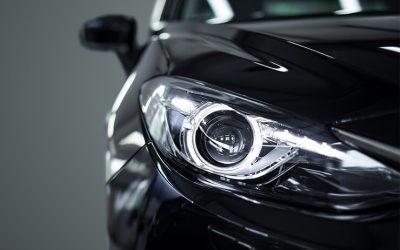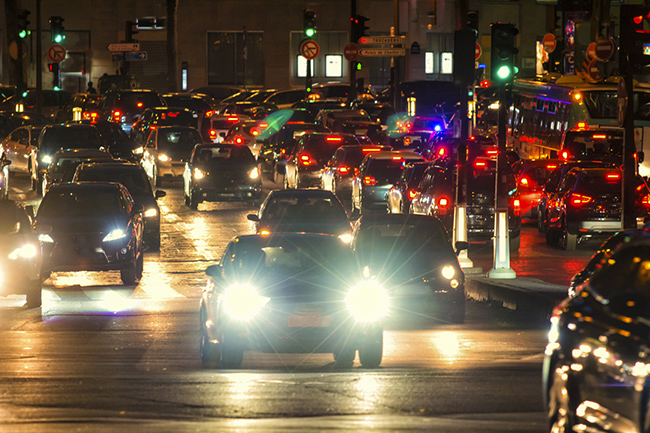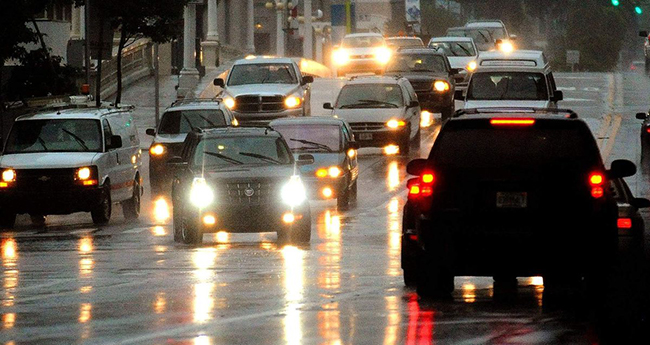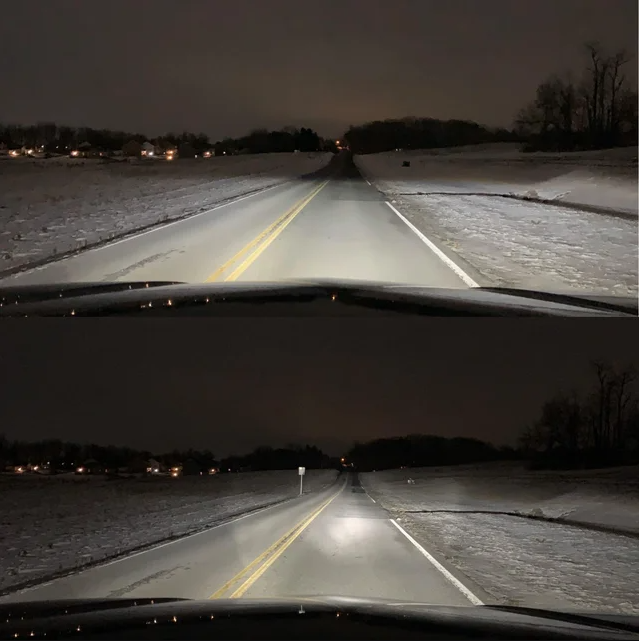As one of the most important safety features of your vehicle, headlights ensure that you can see oncoming traffic and that other drivers can notice you. That said, using your headlights properly and effectively is key to staying safe on the road.
While it may be common sense to turn on your headlights when it’s dark out, did you know there are other situations when it can be advantageous to use them? Do you know when to use the high beams? Or when are low beams most effective? How about what lights are best in fog, rain, or snow? When should you use your headlights during daytime hours? Read on to discover not only when to use your headlights, but also when to use your low or high beams.
Headlight Laws
By U.S. law, every vehicle on the road should be equipped with two functioning headlights that turn on when it gets dark, usually from sunset to sunrise. Many states require drivers to turn on the headlights during daytime when visibility is less than 500 or 1,000 feet. About 20 states, including New York and California, require drivers to have the headlights on whenever their windshield wipers are in use. This makes sense because the wipers would only be on during rain, snow, fog, or other inclement weather conditions with insufficient light.
Be sure to check your local headlight laws to understand the requirements in your state.
When to Use Your Headlights During the Day
Have you ever thought it was unnecessary to drive around with your headlights on during the day? In fact, vehicles with headlights on are much safer and more visible in varying light conditions.
The Department of Motor Vehicles recommends using headlights during the day when:
- Driving during adverse weather conditions, such as fog, smoke, rain, snow, sleet, etc
- Visibility is less than 500 feet
- Driving on rural and mountain roads
- Driving on narrow two-lane highways
- You see Road signs that indicate a daytime headlight zone
- Just after sunrise or just before sunset
- Driving through a construction zone
It makes sense to keep your headlights on during conditions of adverse weather or insufficient light that limits visibility, but why would you need them on mountain roads or in construction zones? Not only do headlights help you see better, they also make it easier for others to see you.
On narrow mountain roads, your vehicle may blend into the mountains in the background. Turning on your headlights can make you more visible to other drivers. This could also explain why you’ll often see road signs in some mountainous states saying something like “daytime headlight use required for the next 10 miles.”
This is the same principle that some state laws require the use of daytime headlights in construction zones. This is to make sure you can see as well as possible, but also to help workers see you.
High Beam & Low Beam Use
Vehicle headlights typically include low beams and high beams. Knowing when to use them will help you get the best view of the road in various situations.
Low Beam
Low beams are the most important and most frequently used beams in a car. They can cast a light that extends about 200 feet, with less extreme glare. The light beam is angled towards the ground to illuminate the road ahead and avoid blinding other drivers.
The best time to use low beams is during standard nighttime driving. The following circumstances are also ideal for low beam use:
- In the rain, fog, or other poor weather conditions
- In towns or urban areas with traffic lights
- Driving against the ongoing traffic
- In areas where your high beams are too dangerous to use
High Beam
High beams cast an intense light that extends up to 400 feet directly in front of your car. This may blind oncoming traffic, so high beams should only be used in situations where they won’t affect other drivers.
Using your high beams in the following situations will help you see farther down the road and see more on the sides of the road:
- Driving on rural and mountain roads
- Driving on poorly lit roads
High beams effectively improve the view in front of you, so you can anticipate turns and react more quickly to animals in the road. Your bright headlights also give oncoming vehicles a little more notice that you’re coming.
Some highways, city streets and country roads don't have enough lighting - which means you'll have a hard time seeing. As long as no traffic is coming your way, turn on the high beams.
Just remember, be sure to switch to your low beams when a vehicle approaches or if you come up on a vehicle from behind. The light from high beams can be especially dazzling for other drivers, compromising their ability to see.
7 Tips for Headlights and Road Safety
Here are some additional headlight tips to help you increase safety on the road:
- Clean your headlight lenses regularly.
- Fogging is a natural process that is caused by the temperature difference between the inside and the outside of the lens. However, if you notice the moisture accumulates and forms something like a pool, contact your local mechanic or car dealer right away.
- You can help restore clarity and remove scratches from your headlight lenses with toothpaste or insect repellent. You can also pay a professional for headlight restoration, or do it yourself with a restoration kit purchased at your local auto parts store.
- Reduce your speed and avert your eyes to the right edge of your lane if an approaching vehicle is using blinding high beams.
- Drive slower and be more careful when using your headlights, as this often means reduced visibility and poorer driving conditions.
- Hire a mechanic to adjust your headlights promptly if they point in different directions.
- Check your headlights regularly and replace them right away if they stop working. It is economical to buy aftermarket headlights from online shops like Vehicleaid.





